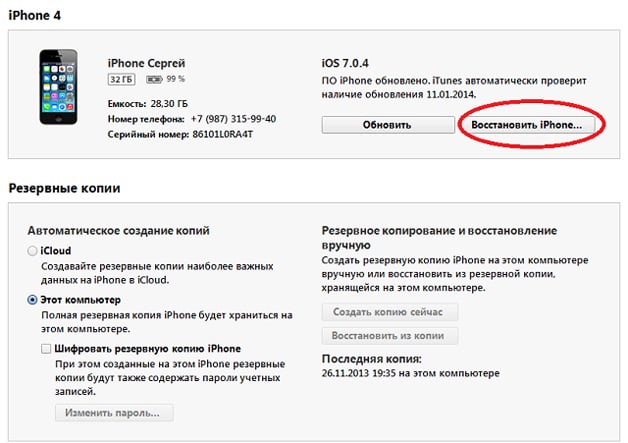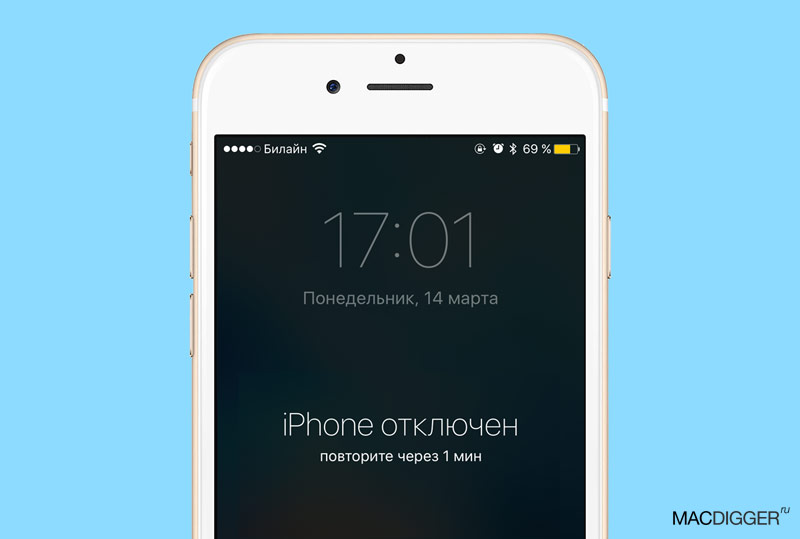Getting root (administrator access) is the first goal of any user who wants to squeeze the most out of their tablet or smartphone. Delete or modify system files, repartition internal memory, create backup copies of programs and restore them, as well as many other actions are unthinkable without root.
However, in some cases, a denial of Root access is necessary. Consider why and how this is done.
Why remove root rights
Why voluntarily cut back on your smartphone? There are a number of good reasons sufficient to remove the root:
- You intend to take advantage of warranty repair, and receiving the root (by the way) will void the warranty. This does not apply to all manufacturers: for some, it is enough that the “iron” remains intact. But often in service centers it is necessary to prove that you have not modified the software. Therefore, for repair, it is necessary to remove the root.
- You are about to receive the update “over the air”, but it is not installed on rooted devices. Perhaps the most common reason for removing the root.
- You want to reduce the risk of infecting your smartphone or tablet with malicious applications or modifications. On a “rooted” device, a malware can do much more trouble.
- You give your device to an non-advanced user (for example, a child or an older relative) and want to eliminate the risk of problems with the OS.
Any of these reasons will make you think about returning your device to its original form (with the exception of some devices from the Celestial Empire that come with a root already received).
How to remove root rights
There are several ways of varying degrees of radicalism, allowing you to abandon the already unnecessary root access. Let's try to deal with each of them:
- Flashing through a computer. By removing the old firmware, you will clear all rights, the updated smartphone or tablet will be deprived of root access. This is the most disruptive way: data not transferred to the SD card or external media will be lost. Sometimes, however, it’s even on hand (say, if you want to return, sell or donate your device, giving personal data along with it is completely useless). After flashing, it is recommended to immediately reset to factory settings.
- If you have SuperUser installed, you can use it to remove Root access directly from running Android (as shown in the animated image below).
- Universal Unroot app helps you automate the process of getting rid of unnecessary rights. Just install and run it. The application is compatible with devices on all modern versions - from ancient Android2 to the latest 6.0.

- Manual removal of the root. The Root Browser Lite application (https://play.google.com/store/apps/details?id\u003dcom.jrummy.root.browserfree) is well suited for this. With this application you need to delete the following files:
/ system / bin / su or / system / bin / busybox (if available)
/ system / xbin / su or / system / xbin / busybox (if available)
Folder / system / xbin / su
After removal, reboot the device. The Root Browser Lite application can also be deleted if you wish, it has done its job. It is also advisable to reset the settings through the recovery menu (reboot and select Wipe Data / Factory Reset) and format the memory card, subsequently returning all the valuable data to it.

Now your smartphone or tablet no longer has any signs of interference, as if there was no root on it. You can safely give it or sell it, carry it to a service center or trust it with confidential information.
Someone wants to get Root rights on a smartphone or tablet, someone wants to remove Root rights from Android, this article is about the latter!
In previous articles, we talked about what Root is and how to get Root rights on Android, in this article we will tell you how to remove them, and the reasons why they should be deleted or not deleted.
Remove Root rights from Android. To be or not to be?
The reasons
1. Android smartphone or tablet is “buggy” - after receiving Root rights, sometimes problems such as freezes or unstable operation and spontaneous reboots occur. The solution to this problem is to reset Android data or you need to remove Root rights from Android, another option is to flash the device.
2. Service center - if your device is broken and you are sure that it is not your fault, and the warranty has not expired, you must contact the manufacturer’s service center, but if they see that you have root rights, then it’s not who it’s for free doesn’t fix it; the output is to remove root rights from Android.
3. Fear of Viruses - it is increasingly heard that there are a lot of viruses on Android, but refusing Root rights does not mean that your smartphone or tablet will be more protected.
How to remove remove root rights from Android
Method number 1. Flashing
This method of removing Root rights from Android is the most reliable, since it erases all traces!
In order to remove Root rights, perform a flashing through computer - Android firmware.
If after the firmware you still have any problems with your smartphone or tablet, then reset / wipe Android.
Method number 2. Uninstall via Magisk
Open the Magisk application and click the "delete" button and then "complete removal", after rebooting Root the rights are deleted! 
Method number 3. Uninstall via SuperSU
If you have the Root SuperSU Admin application installed, go to its settings and find the next item “ Complete Root Removal«
If you installed custom Reocvery in addition to Root rights, you can also delete it by performing a flashing (only of the selected recovery section).
Method number 4. Using file manager
Install the application from Google Play Root Browser Lite
Open the Root Browser Lite app
Follow the path / system / app
- Uninstall SuperSu.apk application (Superuser, root regulatory application)
Follow the path / system / bin
- If there are delete files busybox or suor .su
Follow the path / system / xbin
- If there are delete files busybox or su
- If there is a delete folder .su
Reboot Android smartphone or tablet.
If you have installed the SuperSu application responsible for the operation of Root rights, then go to it, go to settings and click "Uninstall Root"
If you installed custom Recovery, then you need to return the original firmware by taking it from the original firmware. It is also recommended to perform an Android flashing after the completed procedures.
Root rights are deleted and "glitches" are, what to do?
Very rarely, but it still happens, after installing root rights on Android, it starts to fail, such problems arise if Root was received using universal programs.
What to do in situations if your Android tablet or smartphone is buggy:
- Remove Root rights (as described above);
- Perform a complete reset - Wipe Android;
- Format the internal memory and microSD card;
- If this also did not help, then it is worth reflashing your Android (if flashing, then repeat) - Android firmware.
Root rights removed!
That's all! Read more articles and instructions in the section. Stay with the site, then it will be even more interesting!
On smartphones and tablets running the Android operating system. In today's life hack we will look at the reverse operation.
Reasons for removing root rights:
The reasons why users renounce root privileges can be different. Below we list the main problems that could lead you to this page:
- After receiving root-rights on a smartphone or tablet, the device began to work unstably.
- Routing devices lose their warranty and, for example, the volume control button has stopped working for you. Handing over such a device under warranty does not work, because you have violated the terms of this warranty. Removing root rights can help you hide your interference with the device’s operating system.
- Fears that the gadget with root rights may become less protected from viruses.
How to completely remove root rights?
You can revoke superuser rights from a gadget in several ways:
- Manually.
- Programmatically.
Method 1: manually remove Root rights
Most modern file managers (ES File Explorer, Root Browser and X-Plore File Manager) allow you to view Android system folders. We need to get to the “ / system / bin /", Find there the files" su», « busybox"And delete it. Similar actions must be performed on the file " Superuser.apk"Located in the folder" / system / app /". After the done manipulations, it is necessary to reboot the device and the administrator rights should be reset.

How to remove root-rights on Android using a program without a PC
Having saved the gadget from root-rights programmatically, without using a personal computer, you can use the SuperSU program. But this method will only work if you did not install to your device third-party firmware.
- Download and run the application.
- Go to the "Settings" program.
- Find the " Complete ROOT Removal»
- Then click "Continue."

Wait until your device reboots (rebooting may take some time). As soon as the SuperSU program closes, restart your smartphone or tablet - you have given up root rights.
These superuser rights are very useful. But in some cases they only get in the way. For example, if available, the Sberbank Online application will refuse to work. And many programs from other banks also require removing root rights. The trouble is that many users are completely unaware of how to remove root rights from Android completely. That is why we decided to write a separate material devoted to this topic.
As mentioned above, basically root-rights interfere with the presence on the smartphone of any special applications - bank customers or something like that. But there are other reasons to clean up Android:
- You want to contact the service center using the guarantee (superuser rights will void it).
- After gaining root access, the device began to slow down and behave inappropriately.
- The owner begins to fear that the protection of the smartphone has weakened, and therefore viruses can take advantage of this.
Removing root using the file manager
You can easily completely remove root using the file manager. Such utilities on Google Play lots of - you are provided with a choice Root browser , X-plore , ES Explorer and other applications. Download and install any of them if you haven’t done so yet. Then run the file manager and proceed according to our instructions:
1. Go to the / system / bin / folder.
2. Find here the file with the name su and delete it. It is possible that the file may be in a different directory, since everything here depends on the specific implementation of the operating system.

4. Go to the path / system / app / and delete the file called Superuser.apk. If it is in a separate folder, then delete it. Also, a file or folder may be called Supersu - it all depends on which application for managing superuser rights you installed.

5. Reboot the device. If you deleted all three files, then you were able to remove root rights on Android. If you want to make sure of this, then download Root checker - the application will show you that there are no superuser rights on the device.
Removing root with SuperSU
There are several utilities designed to manage root rights. The most popular of these is Supersu . If it is present on your smartphone, then it is easiest to use it to close root access.
1. Launch SuperSU.

2. Go to the “ Settings».

3. In the menu that appears, select " Complete Root Removal».

4. Confirm your action by clicking the " Continue».

5. When the process is completed, reboot the device.
It should be noted that this method only works on official firmware. If you installed a third-party, then after rebooting, root access will again be granted to the system. You can solve this problem by purchasing and installing the application. Universal unroot - at the time of writing the manual, it cost 64 rubles. But even this utility will not cope with root removal on modern Samsung smartphones.
What is wrong with Samsung?
The new South Korean-made devices have a serious protection system called KNOX. You can get around it to obtain superuser rights, albeit with some difficulty. But removing root privileges is even more difficult. In fact, this can only be done through a computer, and the specific actions in this case depend on which model is being manipulated.
In any case, you will have to install the utility Odin3having obtained it on some of the third-party resources. You will also need to download drivers for South Korean smartphones. After that, you need to install the official firmware designed specifically for your model. In a word, all this is too big a topic, deserving a separate material. It should also be noted that in many cases, users have to do factory reset so that the Samsung smartphone does not constantly restart. And this entails a complete loss of user data.
In this article, we will look at ways to completely remove root rights from a smartphone or tablet on Android.
Types of root rights and the main ways to remove root
If you need to remove root rights, it is advisable to remember the way to root. Since the method of obtaining root rights determines the method of removal, this will help to quickly and accurately clean the system. To check root access, use the recommendations from the topic.
There are 3 types of root rights:
- Full root
- Shell Root
- Temporary Root.
Full root means full and permanent superuser rights. Programs and files are in the system partition, therefore, or, will not help. The effective method is to delete all files related to root manually through. A better way is to change the firmware via or.
Shell root the same permanent superuser rights are not reset after a reboot. Moreover, this type of root does not have access to the system catalog. Therefore, to delete, it is enough to reset the settings to the factory state. The firmware will also help to completely remove root rights.
Temporary Root - temporary root for one-time operations. Often used in file recovery programs. After rebooting the system, superuser rights are deleted.
Temporary and partial root, deleted after reboot or reset. Root with access to the system directory is deleted only after a full OS flashing.
How to remove king root
Important! The method is not suitable for devices on the SpreadTrum platform.
Since KingRoot is located in the system partition, a normal reset is not enough. Uninstall KingRoot will help Super-Sume program.
The application replaces KingRoot with SuperSu, where removing root privileges is easier. At the same time, the program often freezes, which is decided by selecting the correct version of the Super-Sume application. Another common problem is that the binary file cannot be updated. In this case, you also need to select the desired version of the program, and sometimes user modification.
Instruction:
- Install the Super-Sume program.
- In the application, click on the blue button to go through the first stage. If the correct version of the program is selected, the process will take a couple of seconds, otherwise 10 minutes or more.
- At the second stage, the program often freezes. If freezing occurs, then after the first step, reboot the device. Open KingRoot, and re-root the device. Next, open Super-Sume, where follow the second step, to completely remove KingRoot.
- Reboot the device. Then go to the program, where in the settings there is an item “Complete Root Removal”.
- Then Super-Sume and Super SU.


How to remove SuperSU

How to remove superuser



 5. Return to the “system” folder again. Open the bin folder, where find and delete busybox or su.
5. Return to the “system” folder again. Open the bin folder, where find and delete busybox or su.






